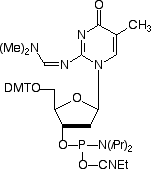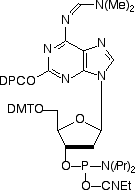In a paper published in the November 2007 issue of Biotechniques1, researchers from the Siemens Medical Solutions Diagnostic Lab in Berkeley provided an interesting new way to solve the problem of designing degenerate primers and/or probes in PCR situations in which, for instance, equivalent quantification across subtype samples is desired.


In the paper under reference, the authors showed that the iso-bases, 5-Me-iso-dC (F) and iso-dG (J) (our products 10-1065 and 10-1078, respectively) can actually be used as kind of universal bases. In the example described in the paper, they developed probes binding to a region of HCV transcripts containing 2 genotype-specific polymorphic sites. And they showed that degenerate probes containing iso-bases provide much closer cycle thresholds (CtS) for targets of both genotypes than other approaches aimed at creating degenerate probes.
It is already well established that iso-bases can increase specificity of nucleic acid hydridization when introduced as a third base pair. Now these authors have demonstrated that iso-bases 5-Me-iso-dC and iso-dG performed as degenerate pyrimidine and purine bases, respectively. Iso-dG further functioned as a degenerate base opposite B (C, T, and G) ambiguous sites.
Iso-bases are supplied under license from EraGen Biosciences, Inc. US Patents 5,432,272, 6,001,983, 6,037,120, and 6,140,496.
dmf-5-Me-isodC-CE Phosphoramidite (10-1065)
dmf-isodG-CE Phosphoramidite (10-1078)